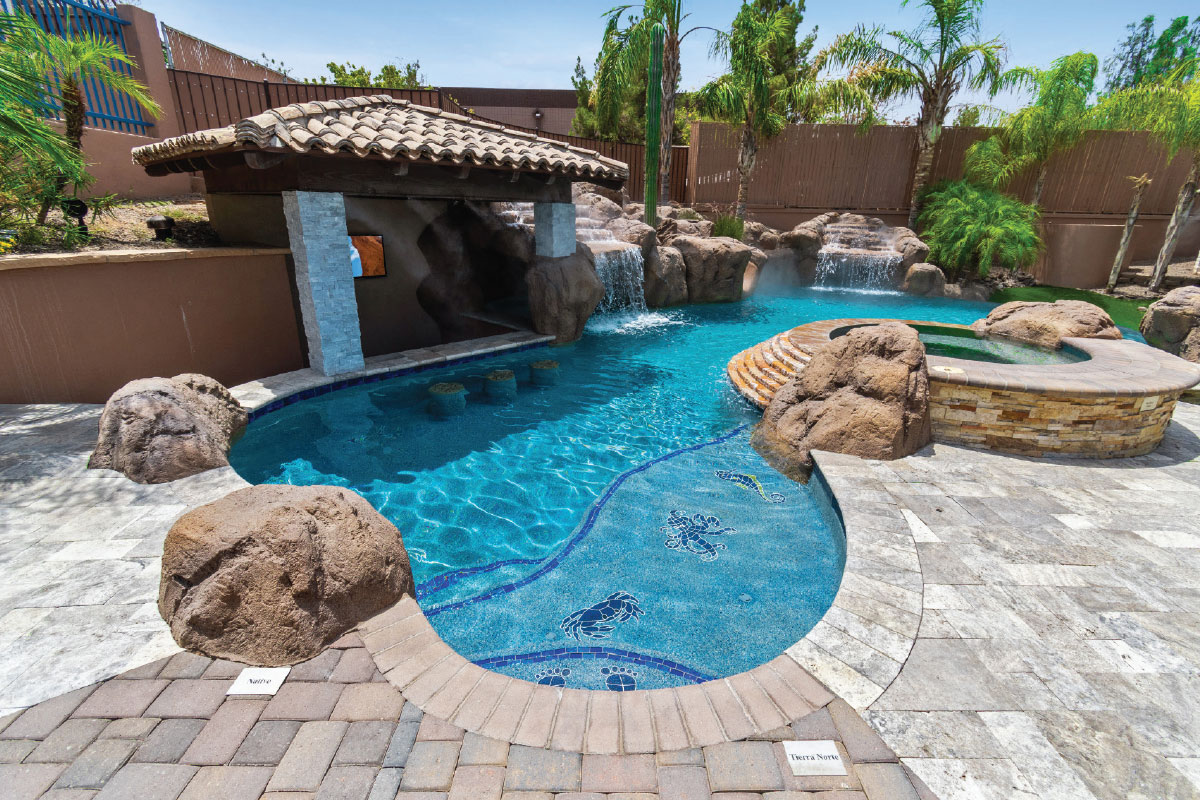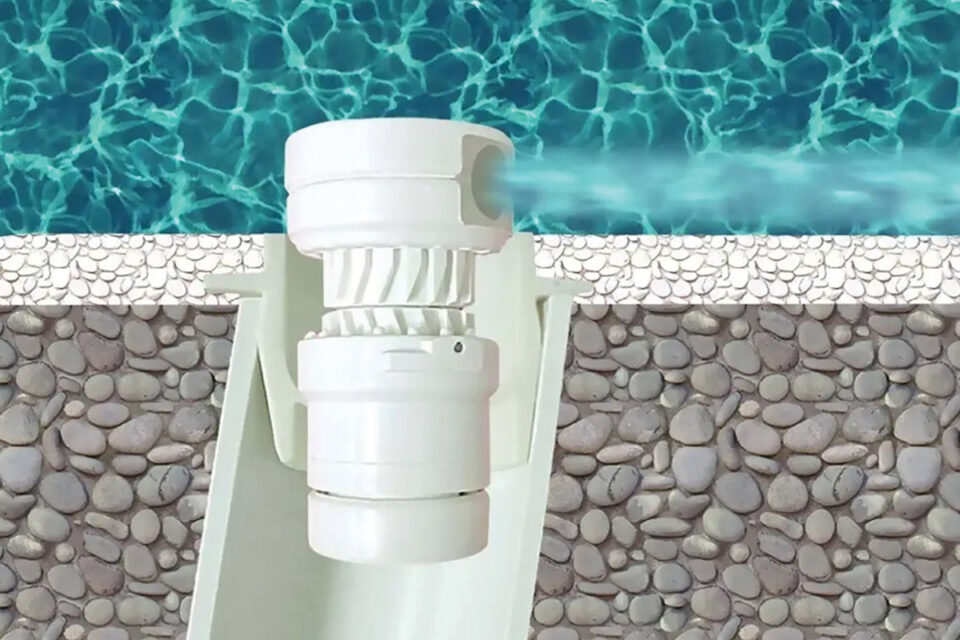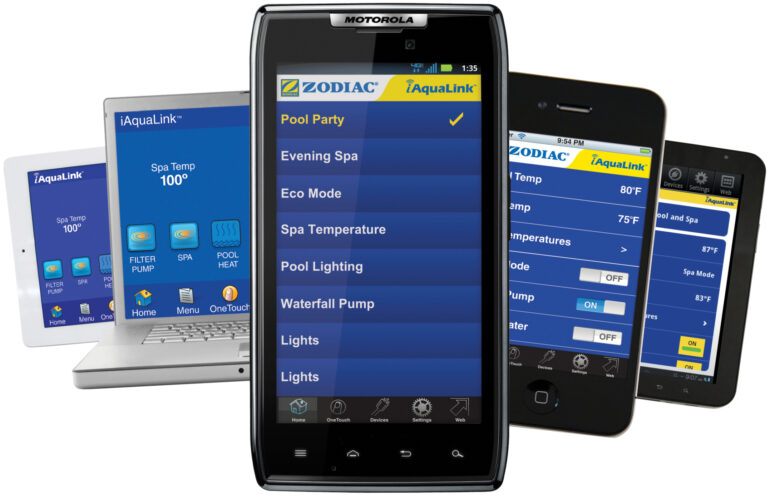What’s in Store for In-Floor?

When a customer first decides to build a swimming pool, the visuals that come to mind are — sparkling blue water, sunny days and a sprawling deck. Equally important, however, are the unseen consumer needs, such as how they’re going to keep that water clean and healthy.
Buyers are aware that fallen leaves, gritty sand and other debris are a fact of life, but they still want to minimize the work required to keep their pool pristine. One solution builders and manufacturers offer is an automatic in-floor cleaning system, which can preserve a pool’s aesthetics with barely visible hardware while also providing low-maintenance upkeep.
A typical in-floor pool cleaning system involves a series of strategically placed pop-up cleaners that are built into the pool’s surface. The cleaners, which are usually flush with the surface when not in use, will lift when activated to clean away debris with powerful water streams, and then retract once the job is done.
“If you want to have a clean pool but you don’t want to be the one out there using the brush to scrub the sand down and move everything toward the main drain, that’s what an in-floor cleaning system is designed to do,” says Graham Orme, product manager for pool equipment manufacturer Fluidra’s specialty brands, including Jandy In-Floor.
Self-cleaning systems aren’t anything new. Fluidra’s Jandy brand began in the late 1950s in California when Andrew Pansini invented the first automatic pool cleaner and founded Jandy Industries. Other pioneers in the 1970s were introducing their own brands of in-floor cleaning systems in Arizona.

Today several companies, including Fluidra and Chandler, Arizona-based Blue Square Manufacturing, Pentair and Hayward, offer an in-floor cleaning system, each with its own engineering and proprietary products.
For buyers considering in-floor cleaning equipment, the decision needs to be made from the get-go, during the construction phase.
According to Addam Barrow, Texas-based regional sales manager for Blue Square, the company’s Q360+ system does more than just clean. “It’s a cleaning system, but, really, it’s more of a circulation system,” Barrow says. “It’s truly the best swimming environment you can get because you’re getting a true total water turnover.”
Propelling these systems, so to speak, are variable-speed pumps, which adjust their flow to minimize wasteful energy use. The Department of Energy has required all companies to use VSF pumps since July 2021. “We have always utilized VSP technology,” Barrow says. “Our whole system was designed to work with the variable-speed flow, so that we work off of water flow, instead of having to use pressure from an auxiliary or additional booster pump.”
According to Barrow, in-floor cleaners are user-friendly compared to traditional cleaners, which range from the inexpensive, but time-consuming, manual pool cleaners that one must manipulate themselves; suction pool cleaners that are similar but operate independently; to the more expensive robotic cleaners that are efficient but for some consumers can be cumbersome to use, noisy — and unsightly.
Part of being user-friendly is requiring minimal maintenance. “It’s very hands off for the homeowner,” Orme says. “Basically, you just set it and it goes. And then when you do your normal maintenance of your pool filter, that’s the extent of the upkeep you’re going to have to do. It’s a system that will continue to clean your pool for the life of the whole pool.”
Presidential Pools, Spas & Patio in Arizona relies on its sister company, Blue Square, for its in-floor cleaning needs. “It not only keeps your pool clean but it also looks visually appealing because you don’t have that ugly robot vacuum,” says Grace Koval, marketing director for both Presidential Pools and Blue Square.
It not only keeps your pool clean but it also looks visually appealing because you don’t have that ugly robot vacuum.”
Grace Koval, Presidential Pools
The installation cost of in-floor cleaners depends largely on the size of the individual pool. Blue Square’s average in-floor package comes with 14 to 15 floor jets, designed to cover a 30-foot by 15-foot pool.
Koval says that the cost would “depend on what the pool builder is going to sell their system for,” adding that on average the system would be between $2,000 and $3,000. The expense, Barrow notes, is mitigated over the life of the pool by the savings accrued. “With an in-floor system, you’re looking at saving about 20% on chemicals and around 30% on heating,” Barrow says. “It’s like anything else: If you make wise investments, they should pay for themselves.”
In-floor cleaning systems are more popular in some states than others, particularly Arizona and Texas but also the whole Southwest, says Orme, due to the desert sands and winds that blow their particulate over a wide area. And then there’s warm-weather Southeastern states, where trees drop leaves year-round over acres of lawns — and swimming pools. Still, as more consumers are drawn to the convenience of automated smart home devices, the popularity of in-floor cleaners may be likely to expand.





